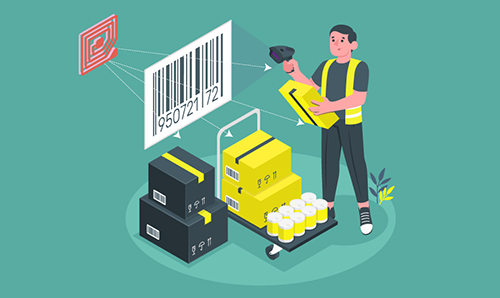In today's fast-paced business environment, managing inventory efficiently is crucial for companies seeking a competitive edge. With traditional inventory management methods falling short in terms of speed and accuracy, businesses are turning to cutting-edge technologies like RFID (Radio-Frequency Identification) asset tracking. This revolutionary system offers unparalleled speed and precision, transforming the way companies handle their inventory. In this article, we delve into the benefits of RFID asset tracking and how it can expedite inventory management processes for businesses of all sizes.
1. Lightning-Fast Automated Data Capture:
RFID asset tracking eliminates the tedious process of manual data entry and barcode scanning. By leveraging radio frequency signals, RFID tags can be read automatically without requiring direct line-of-sight. This speed allows for multiple tags to be scanned simultaneously, enabling businesses to complete inventory counts in a fraction of the time compared to conventional methods.
2. Real-Time Visibility for Optimal Decision Making:
Gone are the days of waiting for inventory updates. RFID asset tracking provides real-time visibility into the movement and location of assets throughout the supply chain. This instantaneous access to data empowers inventory managers to make informed decisions promptly. Whether it's monitoring stock levels or identifying potential bottlenecks, the ability to act swiftly enhances operational efficiency.

3. Minimized Human Error, Maximized Accuracy:
Inaccuracies in inventory data can lead to costly errors and delays. With RFID technology, human errors associated with manual data entry and barcode scanning are drastically reduced. The automated nature of RFID asset tracking ensures that the data collected is reliable and error-free, resulting in accurate inventory records and improved order fulfillment.
4. Streamlined Workflows for Time Optimization:
RFID asset tracking streamlines various inventory management processes, including receiving, picking, and shipping. By automating these tasks, companies can complete them faster and more efficiently. Employees can focus on higher-value activities, improving overall productivity and customer satisfaction.
5. Faster Audits and Cycle Counts:
RFID asset tracking simplifies auditing and cycle counting processes. Traditional manual audits can be time-consuming and prone to errors. RFID technology expedites the process by identifying discrepancies between physical stock and digital records instantly. This not only saves time during audits but also ensures greater accuracy.
6. Scalability to Accommodate Growth:
As businesses expand, inventory levels increase, and conventional inventory management systems may struggle to keep up. RFID asset tracking offers unparalleled scalability, effortlessly handling large amounts of data and providing consistent performance even as inventory volumes grow.
RFID asset tracking is undeniably the fastest and most efficient way to manage inventory in today's business landscape. By automating data capture, providing real-time visibility, minimizing human errors, and streamlining workflows, RFID empowers companies to optimize inventory management processes and gain a competitive edge. Investing in RFID technology may involve an initial cost, but the long-term benefits of enhanced efficiency and accuracy far outweigh the expenses. Embrace RFID asset tracking today and revolutionize your inventory management for a brighter, faster, and more profitable future.